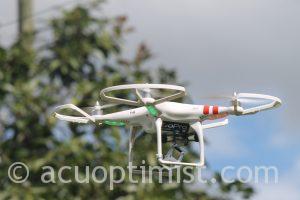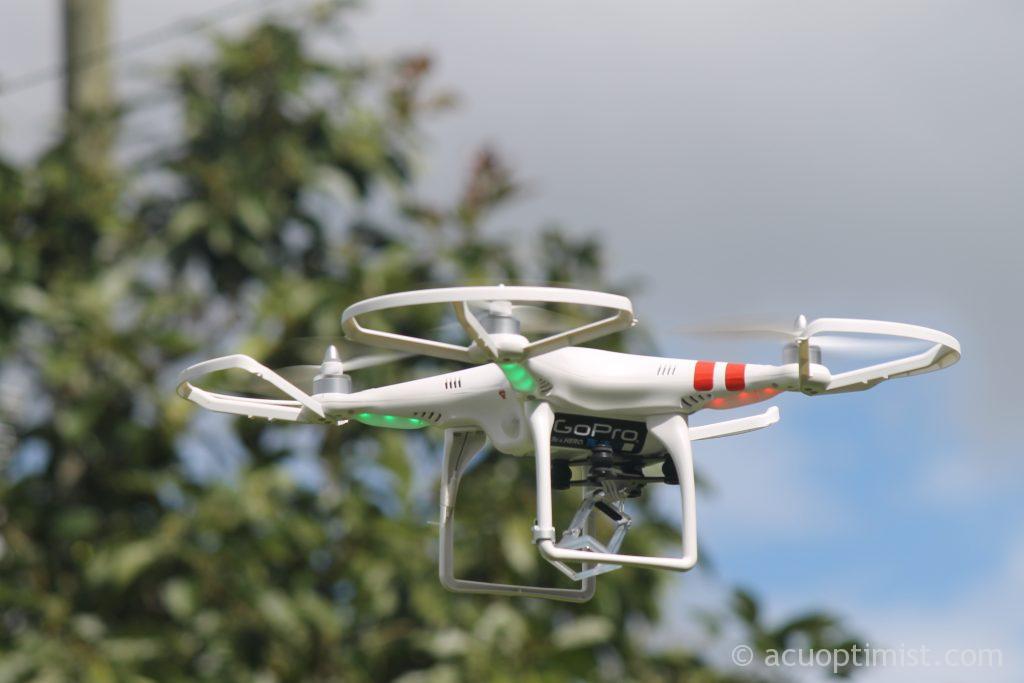Drones allow videographers and photographers to get those hard-to-get shots from above.
Abilene is one place where the scenery around the outside of town is a prime example of shots that drone users look for. The increase in drone usage by commercial users and hobbyists led the Federal Aviation Administration to implement regulations concerning drone flying in late 2015. Safety was the main driving force.
The regulations have affected several people trying to start their own drone videography businesses, including Abilene resident Luke Howell, owner and operator of Abilene Drone.
“It delayed our ability to grow initially as we were waiting to hear back on waivers,” Howell said. “The process can be lengthy. For example, we had to turn down some nighttime jobs because we did not have the night waiver yet because we were at the mercy of the FAA on processing it and giving us an answer. This has resulted in lost business in the past. We have voiced these concerns to the FAA in the past, and they understand, but there is not a whole lot they can do about it as everything just has to run through the process so to speak.”

A DJI Phantom 2 drone (Photo from Flickr Creative Commons)
The law requires drone hobbyists to contact hospitals, airports, helipads and military bases within a five-mile radius before flying their drones. The FAA has an app, B4Ufly, that shows all locations drone pilots need to contact.
Leigh Black, marketing director for Hendrick Medical Center in Abilene, said the hospital takes drone precautions seriously for safety and privacy concerns of hospital patients.
“We don’t own the airspace, but we own the landing pad. Because helicopters could land at any time in emergency situations, there should be no drone activity in the area,” Black said. “All drone operators have to file a flight plan with the FAA prior to flying. If media uses a drone, they are violating our policy that says no cameras are allowed without HMC escort.”
Drone flyers don’t agree with all the rules, and some think need to be changed. The primary rule that drone enthusiasts have an issue with is registering a flight plan with the FAA.
Seth Patton, a diesel technician at Abilene Diesel, said this is one of the many rules that need to be ironed out in legislation related to drones.
“Registration of a flight plan needs to be almost automated,” Patton said. “The electronic stuff they are proposing and that kind of stuff works – when it’s easy enough that people will do it. Right now is so convoluted and complicated that people will find another way around it.”
ACU uses drones to fly and get shots of campus from above to show the beauty of the campus for marketing purposes. When commercial fliers are not employees of the university they need to get permission first. Scott Delony, visual media specialist in the Office of Creative Services, said flying over campus requires a process.
“If anyone is coming on campus for any sort of commercial purposes, for their business or for ACU’s, we do require them to show us their waiver of authorization because ACU is in a controlled airspace,” Delony said. “If they don’t have that, even if they have their license, we don’t allow them to fly here.”
Sometimes the regulations can be a blessing for others in drone videography businesses because of the limited competition that results.
“Our ability to grow quickly over the past year has given us an edge while other people are still trying to get all the legalities in order,” Howell said. “That time was extremely valuable to us as with a startup company in a very new industry, it has led us to become the predominant drone company in the area.”
One solution that a lot of drone enthusiasts, including Howell, want to see happen is the creation of a designated area where drone flyers can fly their drones without contacting the airport.
“There should be designated “drone friendly” parks or areas that allow people to enjoy them,” Howell said. “They are very fun recreationally and can be operated safely. The problem is you have the few bad apples that do something stupid and then ruin it for everyone. I think designated drone areas though would be great or at least if we could implement an education course when purchasing a drone so that everyone can enjoy them but operate in a safe and positive manner.”
SideBar:
According to the FAA website, the major rules for hobbyists to fly their drones are listed below:
- Fly for hobby or recreation only
- Register your model aircraft
- Notify the all airports and air traffic control towers that are within five miles of flight prior to flying
- Maximum altitude is 400 feet
- Fly within visual line-of-sight
- Follow community-based safety guidelines and fly within the programming of a nationwide community-based organization
- Fly a drone under 55 lbs.. unless certified by a community-based organization
- Never fly near other aircraft
- Never fly near emergency response efforts

